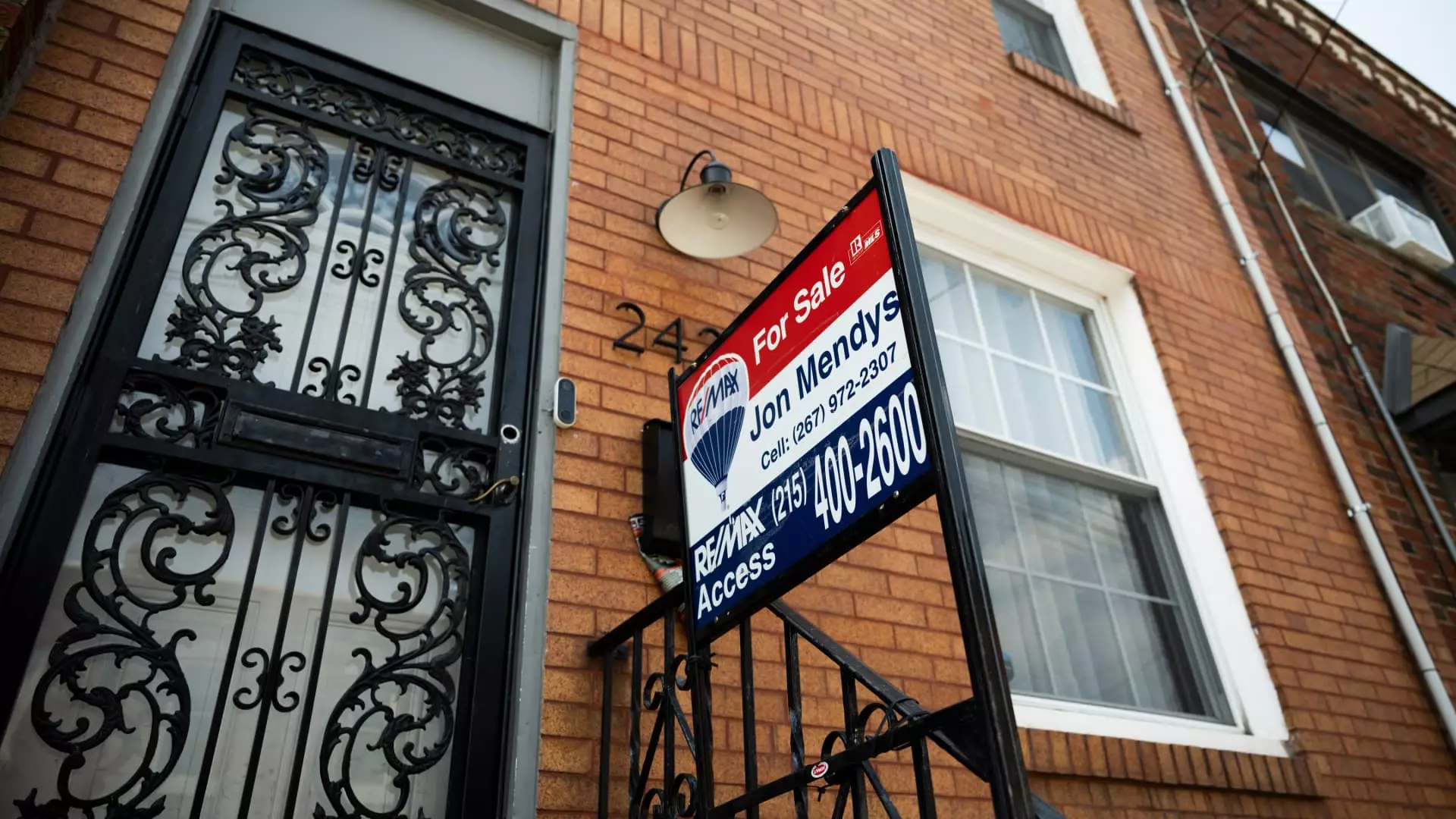The U.S. housing market has entered a phase marked by increasing volatility and challenges for many potential buyers. With a combination of soaring mortgage rates, high home prices, and limited property inventory, navigating this landscape has become increasingly difficult. While some indicators suggest slight improvements, the overall picture points to significant obstacles that could hinder a full recovery of the market.
Recent data reveals a troubling trend in the housing market. According to the National Association of Realtors (NAR), sales of previously owned homes dropped 4.9% in January, resulting in an annualized total of approximately 4.08 million units. This decline was steeper than the anticipated 2.6%, raising concerns about the underlying health of the housing market. Although there is a year-over-year increase of 2% compared to January 2024, it is essential to note that these figures reflect a market that is operating at a 15-year low.
The ongoing struggle with high mortgage rates has made it difficult for buyers to commit to home purchases. A significant factor has been the Federal Reserve’s incomplete impact on interest rates—despite multiple cuts, mortgage rates have lingered at rates above 6%. Lawrence Yun, the NAR’s chief economist, elaborates on the implications: “When combined with elevated home prices, housing affordability remains a major challenge.” This stagnant nature of interest rates means the dream of homeownership feels further out of reach for many.
While the total inventory of homes for sale rose by 3.5% from December to January and saw a remarkable 17% increase compared to the previous year, the overall volume remains exceedingly low with only 1.18 million homes available. This amount signifies just a 3.5-month supply at the current sales rate, starkly undershooting the six-month supply that is traditionally considered adequate to meet buyer and seller demand.
Despite a growing inventory, buyers are still struggling to find homes within their budgets. The average time homes spent on the market reached 41 days—longer than at any time since early 2020. The extended time frames underscore the pressure on housing prices that continues to challenge affordability, as buyers remain hesitant amid uncertain economic conditions.
As supply constraints persist, housing prices have continued to escalate, contributing to the affordability crisis. The median home price in January soared to a record high of $396,900—an increase of 4.8% since the previous year. This price trend remains consistent across all four Census regions, demonstrating the breadth of the issue. The stark reality is that for many, even the prospect of purchasing a new home seems daunting when the median price remains so elevated.
In practical terms, this means that while more homes are becoming available, many potential homeowners find themselves priced out of the market. The NAR also noted that approximately 15% of homes sold exceeded their list prices, indicating competitiveness in certain market segments. However, the lack of affordability continues to be a primary obstacle for many would-be buyers who may not have the financial capacity necessary to make such competitive offers.
The Impact on First-Time Buyers and Market Segmentation
The impact of current market conditions is particularly pronounced for first-time buyers, who made up just 28% of home sales in January—well below the historical average of about 40%. As these buyers navigate a steep climb to homeownership, their participation is pivotal for the overall health of the housing market. The need for both increased inventory and lower mortgage rates is essential for these buyers to transition to homeownership successfully.
Interestingly, homes priced at higher points, particularly properties above $1 million, have seen significant sales growth, surging nearly 27% from the previous year. This trend highlights a bifurcated market where higher income buyers are more insulated from the pressures affecting lower price segments, such as homes valued between $100,000 and $250,000, which have experienced a 1.2% decrease in sales year-over-year.
The current dynamics of the U.S. housing market illustrate a complex interplay of factors that present challenges and opportunities. While there are signs of inventory improvements, the underlying issues of high mortgage rates and elevated prices continue to hinder many potential buyers. As the market adjusts to these conditions, both buyers and realtors must remain adaptable, seeking strategies to navigate the evolving landscape in hopes of a more balanced and accessible market in the future. Navigating these challenges requires careful consideration, patience, and understanding of the larger economic environment at play.

